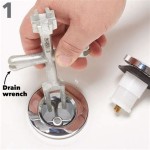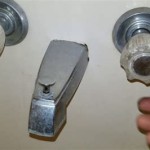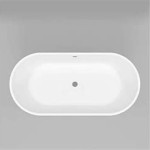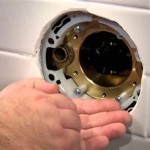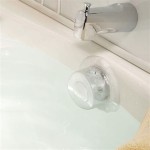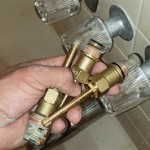Unclog Bathtub Drain Cleaner: A Comprehensive Guide
A clogged bathtub drain is a common household problem that can be frustrating and inconvenient. Hair, soap scum, mineral deposits, and other debris can accumulate over time, restricting water flow and eventually leading to a complete blockage. While calling a plumber is an option, numerous unclog bathtub drain cleaners are available to address the issue effectively and affordably. This article provides a comprehensive overview of these cleaners, their mechanisms of action, safety considerations, and best practices for use.
Understanding the nature of the clog is the first step in selecting the appropriate unclog bathtub drain cleaner. Different types of clogs respond differently to various cleaning agents. Hair, for example, requires a different approach than soap scum or mineral buildup. Considering the plumbing system’s material is also critical, as some cleaners can damage older pipes. Understanding the composition of the drain cleaner itself, including its active ingredients and potential environmental impact, is also important for making an informed decision.
Choosing the right unclog bathtub drain cleaner depends on a variety of factors. The severity and composition of the clog, the type of plumbing involved, and personal preferences regarding safety and environmental impact all play a role. This article will explore different categories of drain cleaners, outlining their pros and cons to aid in selecting the most suitable option for a specific situation. Furthermore, preventative measures will be addressed to minimize the likelihood of future clogs, thereby reducing the need for constant drain cleaning.
Types of Unclog Bathtub Drain Cleaners
Unclog bathtub drain cleaners can be broadly categorized into chemical drain cleaners, enzymatic drain cleaners, and physical drain clearing methods. Each category possesses unique characteristics and varying degrees of effectiveness.
Chemical Drain Cleaners: These cleaners rely on strong chemical reactions to dissolve or break down the clog. They typically contain highly corrosive substances like sodium hydroxide (lye) or sulfuric acid. Chemical drain cleaners are generally the most potent and fastest-acting option, but they also pose the greatest risk to both the user and the plumbing system.
Alkaline drain cleaners, which contain sodium hydroxide or potassium hydroxide, work by saponifying fats and oils, turning them into soap that can be flushed away. They also generate heat, which aids in dissolving hair and other organic matter. Acidic drain cleaners, containing sulfuric acid, are generally used in more severe cases where alkaline cleaners have failed. They are particularly effective at dissolving mineral deposits and scale.
The use of chemical drain cleaners requires extreme caution. Direct contact with skin or eyes can cause severe burns. It is imperative to wear protective gloves and eyewear, and to ensure adequate ventilation when using these products. Mixing different chemical drain cleaners is strictly prohibited, as this can create hazardous gases or explosive reactions. Furthermore, repeated use of harsh chemical drain cleaners can corrode pipes, particularly older metal pipes, leading to leaks and costly repairs.
Enzymatic Drain Cleaners: These cleaners utilize enzymes and bacteria to break down organic matter. They are typically less aggressive than chemical drain cleaners and are considered a more environmentally friendly option. Enzymatic cleaners work by digesting hair, soap scum, and other organic materials over time. They are generally safe for all types of pipes, including older systems and septic tanks.
The effectiveness of enzymatic drain cleaners depends on several factors, including the concentration of enzymes, the temperature of the water, and the type of clog. They are most effective in preventing clogs or clearing minor blockages caused by organic matter. For severe clogs, enzymatic cleaners may not be sufficient. These types of cleaners require more time to work compared to chemical options, often needing several hours or even overnight to achieve satisfactory results.
Physical Drain Clearing Methods: These methods involve physically removing the clog without the use of chemicals. Common tools include plungers, drain snakes (also known as augers), and wet/dry vacuums. Physical methods are generally the safest and most environmentally friendly option, but they may require more effort and skill.
A plunger creates suction that can dislodge clogs. It is most effective for clogs located close to the drain opening. A drain snake is a flexible tool that can be inserted into the drain to break up or pull out clogs located further down the pipe. Wet/dry vacuums can be used to suck out clogs from the drain opening. Proper technique is essential when using physical drain clearing methods to avoid damaging the pipes or pushing the clog further down.
In some cases, a combination of methods may be necessary to clear a stubborn clog. For example, a plunger can be used to loosen the clog, followed by a drain snake to remove it completely. Before resorting to chemical drain cleaners, it is advisable to try physical methods first.
Safety Considerations When Using Drain Cleaners
Safety is paramount when handling any type of drain cleaner, regardless of whether it is chemical, enzymatic, or physical. Failure to follow safety precautions can result in serious injury, property damage, or environmental harm.
Read and Follow Instructions: Always read and follow the manufacturer's instructions carefully before using any drain cleaner. Pay attention to warnings, precautions, and recommended usage amounts. Overuse of drain cleaners can damage pipes and may not necessarily improve effectiveness.
Wear Protective Gear: When using chemical drain cleaners, wear protective gloves, eyewear, and a mask to prevent contact with skin, eyes, and respiratory system. Even enzymatic cleaners can cause irritation, so it is advisable to wear gloves when handling them.
Ensure Adequate Ventilation: Chemical drain cleaners can release noxious fumes. Ensure adequate ventilation by opening windows and doors before and during use. Avoid breathing in the fumes directly. If fumes cause discomfort, leave the area immediately and seek fresh air.
Never Mix Drain Cleaners: Mixing different types of drain cleaners, especially chemical drain cleaners, can create hazardous gases or explosive reactions. Never mix drain cleaners under any circumstances. If one type of drain cleaner fails to clear the clog, try a different method or consult a plumber.
Protect Surfaces: Some drain cleaners can damage surfaces such as porcelain, tile, and metal. Protect these surfaces by covering them with plastic sheeting or towels before using drain cleaners. Wipe up any spills immediately with a damp cloth.
Keep Out of Reach of Children and Pets: Store all drain cleaners in a secure location out of reach of children and pets. Chemical drain cleaners are especially dangerous and can cause severe burns if ingested or contacted. If a child or pet accidentally ingests drain cleaner, seek immediate medical attention.
Proper Disposal: Dispose of empty drain cleaner containers according to local regulations. Do not reuse empty containers. Never pour drain cleaner down storm drains or into the environment.
Preventative Measures to Avoid Clogged Drains
Preventing clogs is always better than dealing with them after they occur. Implementing preventative measures can significantly reduce the frequency of clogged bathtub drains and minimize the need for drain cleaners.
Hair Catchers: Install hair catchers in bathtub drains to prevent hair from entering the pipes. Hair is one of the most common causes of clogged bathtub drains. Hair catchers are inexpensive and easy to install.
Regular Flushing: Flush the drain with hot water after each use to help prevent soap scum and other debris from accumulating. Hot water can dissolve some of the buildup before it hardens and clogs the drain.
Avoid Pouring Oils and Grease Down the Drain: Oils and grease can solidify in the pipes and cause clogs. Dispose of oils and grease properly in a container and throw it away with the trash.
Baking Soda and Vinegar Flush: Periodically flush the drain with a mixture of baking soda and vinegar. Pour one cup of baking soda down the drain, followed by one cup of vinegar. Let it fizz for 30 minutes, then flush with hot water. This mixture can help break down minor buildup and keep the drain clear.
Professional Drain Cleaning: Schedule regular professional drain cleaning to remove buildup and prevent clogs from forming. Plumbers have specialized tools and equipment to thoroughly clean drains and identify potential problems before they become major issues.
Use Liquid Soap Instead of Bar Soap: Bar soap tends to leave more residue than liquid soap, which can contribute to soap scum buildup in the drain. Switching to liquid soap can help reduce the amount of residue that enters the drain.
By following these preventative measures, one can significantly reduce the likelihood of clogged bathtub drains and maintain a healthy plumbing system. While drain cleaners can be effective in clearing clogs, prevention is always the best approach.

Top 5 Tips On How To Unclog A Bathtub Drain Smiley Cleaning

How To Unclog A Bathtub Drain Homeserve Usa

How To Unclog A Bathtub Drain 11 Diy Clog Busters

How To Unclog A Bathtub Drain The Right Way

How To Unclog A Bathtub Drain Without Chemicals

How To Unclog A Bathtub Drain Without Chemicals Family Handyman
How To Clean The Inside Of A Bathtub Drain Without Removing It Quora

How To Unclog A Bathtub Drain 11 Diy Clog Busters

How To Unclog A Bathtub Drain 11 Diy Clog Busters

3 Simple Ways To Unclog A Bathtub Drain Naturally Wikihow

